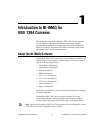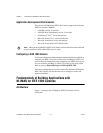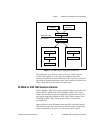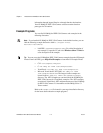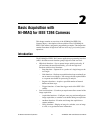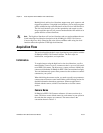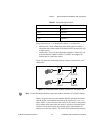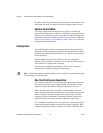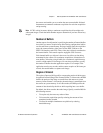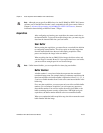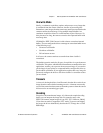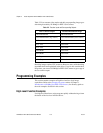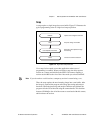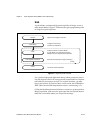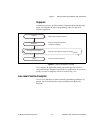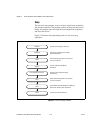
Chapter 2 Basic Acquisition with NI-IMAQ for IEEE 1394 Cameras
© National Instruments Corporation 2-5 NI-IMAQ for IEEE 1394 Cameras User Manual
the camera and enables you to examine the most current buffer. National
Instruments recommends continuous acquisition for real-time acquisition
and processing.
Note If CPU activity increases during a continuous acquisition, the driver might miss
subsequent images. Check the buffer number output to determine if you have missed any
images.
Number of Buffers
Another aspect of configuration is specifying the number of internal buffers
into which you want to acquire image data. During configuration, buffers
are allocated from system memory and page-locked. Once the acquisition
starts, the camera transfers video data over the IEEE 1394 bus to the
IEEE 1394 interface card FIFO. Then, video data is directly transferred to
the internal buffer. This transfer requires negligible CPU resources.
Each internal buffer you allocate is the exact size of the raw data being
transmitted by the camera. For continuous acquisitions, allocate three or
more buffers. Allocating a single buffer for a continuous acquisition may
result in a high number of lost images. For one-shot acquisitions, specify
the number of buffers that the application requires. For example, if the
application runs for two seconds, and the camera acquires at 30 frames per
second, allocate 60 buffers to capture each image.
Region of Interest
The region of interest (ROI) specifies a rectangular portion of the image to
be captured. In Partial Image Size Format (Format 7) video modes, the ROI
defines the portion of the image to transfer from the camera to system
memory. In non-Format 7 video modes, the entire image is transferred from
the camera to system memory. In all video modes, the ROI specifies the
amount of data decoded by the driver while acquiring into a user buffer.
By default, the driver transfers the entire image. Specify a smaller ROI for
the following reasons:
• To acquire only the necessary subset of data
• To increase the acquisition speed by reducing the amount of data
transferred and/or decoded
• To allow for multiple simultaneous acquisitions by reducing
bandwidth usage



